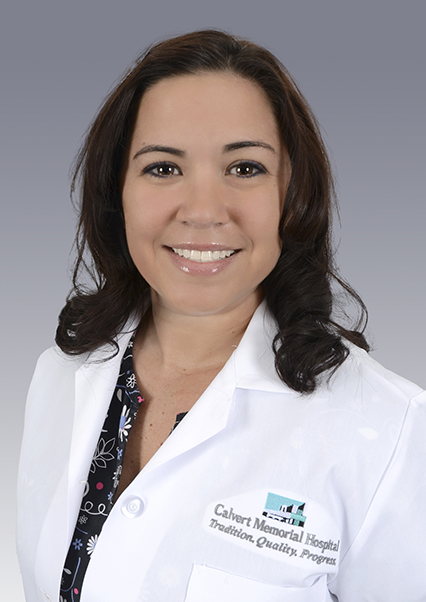
Like many smaller facilities, Calvert Memorial Hospital in Prince Frederick, MD, goes down to one hospitalist and one ED physician after midnight, and ensuring airway safety in an emergency situation can be a challenge. When Calvert physicians decided it was time to improve the odds they turned to Heather Wright, BSRC, RRT, to help spearhead the initiative.
“There have been many advances in airways over the years with regards to direct laryngoscopy, LMAs and Kings, and a lot of research showing their safety when the traditional intubation is difficult or unobtainable,” explains the AARC member, who currently serves as cardiopulmonary manager at the hospital. “Under Dr. Drew Fuller’s direction, we worked to bring the technology and best practice to the bedside for providers of all skill sets.”
RTs right for the job
According to Dr. Fuller, the group began by instituting a simple Failed Airway Protocol that could be easily implemented in the event of a failed or difficult airway. “It helped with planning and preparation, and getting everyone on the same page, similar to protocols in the ACLS models,” says the physician.

From there, the team turned their attention to the development of a Comprehensive Airway Cart that could be used in both the ED and the ICU, along with education for clinicians to ensure everyone on staff could use it. A checklist to help with preparation, performance, and post-intubation management was established as well.
“We worked as a team to organize and label a rolling cart of supplies, educated the RTs, RNs, and providers on the importance of having a three part plan and what each part entailed, and purchased a mannequin to allow providers to practice different techniques hands-on using the equipment,” says Wright.
Since RTs are at the head of the bed to assist the provider during intubation, they were deemed the logical practitioners to serve as the “keepers” of the cart. “We restock the cart after every use and make sure it is ready to go for the next emergency,” says Wright
Dr. Fuller — who is an RRT in addition to an MD, and an AARC member as well — knows RTs are right for the job. “Heather and other respiratory therapy leaders are in essential positions of helping assure best practices and standardization,” he says. “This is not only because of their expertise but because the respiratory therapist is the common element in all out-of-OR intubations. They often know what works and what doesn’t.”
Award winning performance
The first cart was implemented in the ED and a second has now been deployed to the ICU as well. Wright says the carts have been present at more than 150 codes so far, the vast majority in the ED since the hospital traditionally only has a handful of codes in the inpatient setting.
“Research says that 1.5% to 8.5% of patients who have been intubated can be classified as difficult, and 0.5% of the population have an airway that is impossible to intubate,” emphasizes Wright. ”This process, this patient safety initiative, will certainly pay for itself when we encounter the airway that we can’t intubate by the persistence of Plan A, and we have to implement our Plan B or C.”
Until then she and her colleagues will continue to educate providers on the airway initiative and share their experiences. Wright believes that’s vital for a hospital like hers. “Although it seems like a no brainer, there are many patients out there every day across the country that are having bad outcomes due to difficult airways and poor planning on the part of the provider.”
Last year, Dr. Fuller nominated Wright for the Calvert Memorial Hospital Beacon Award, which is given to the department director who has exhibited the ability to lead by example, identify goals, coordinate action, and achieve desired outcomes, and she came out on top in a field of 14 other department directors.
Chief Operating Officer Tony Bladen summed up her contributions in the press release issued after the award was bestowed: “Heather stands out as a remarkable department leader. In addition to her leadership of the cardiopulmonary team, her leadership as co-director of the hospital-wide Safer Airway Committee has allowed us to design, initiate, and advance a safety program that is team-based and multi-departmental. Her positive, professional, and engaging style inspires others.”